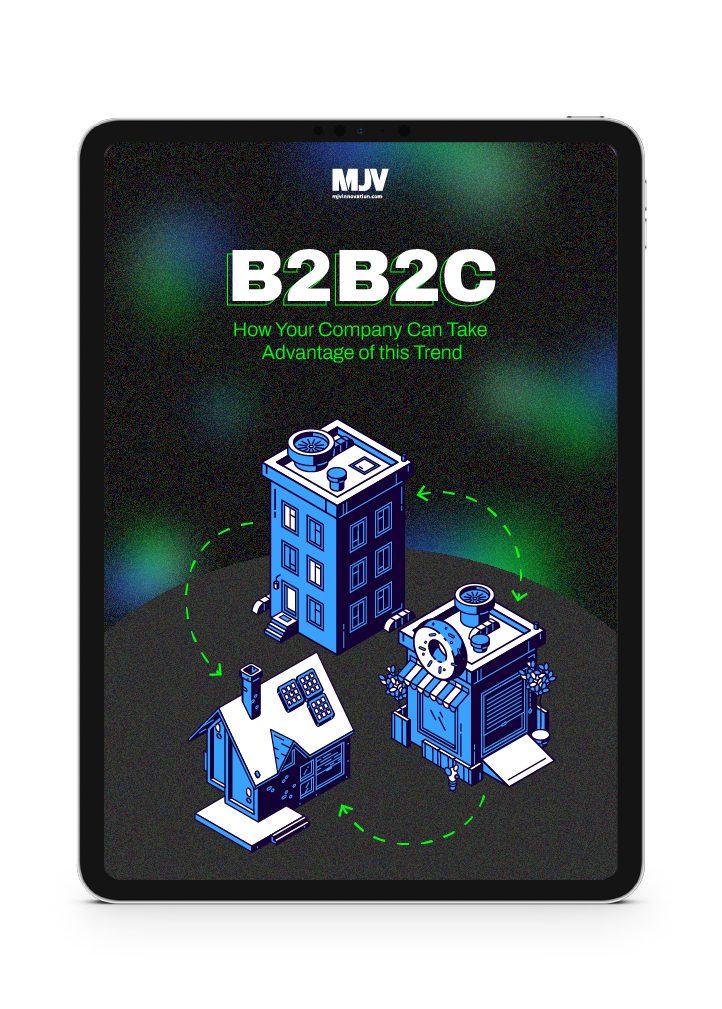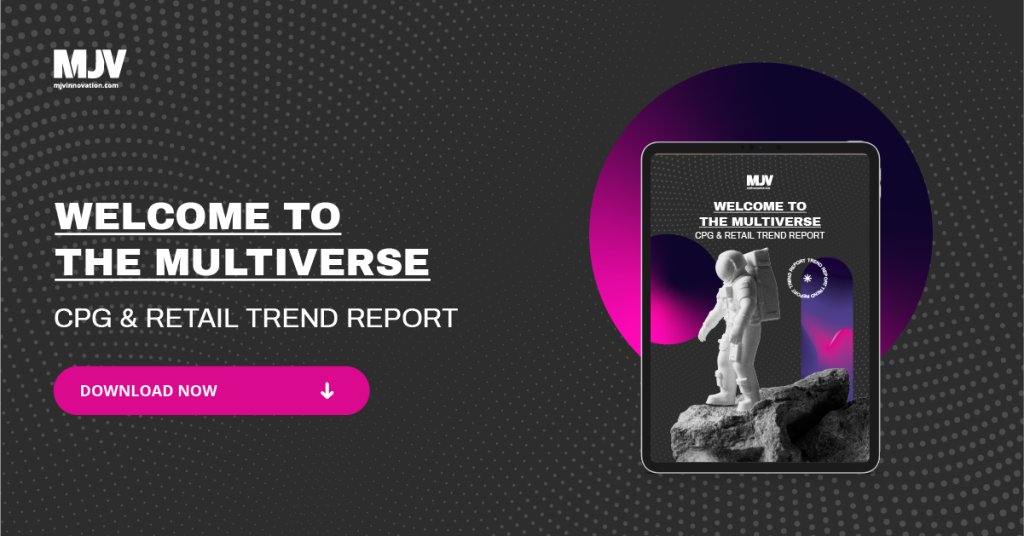B2B2C: The Reasons, Requirements, and Rewards
B2B2C is both a fairly well-consolidated business model within the market — and a rising trend. This article focuses on the types of B2B2C relationships with partners and how to make this transition. Read more.
Although it isn’t exactly a new topic in the CPG & Retail table, B2B2C is still a rising trend. The following article explains why businesses are increasingly switching to the B2B2C model, and how you can get there yourself.
But before this, let’s have a quick conversation. You must have noticed the abundance of acronyms linked to business, right? There are a bunch of them: from classical B2B and B2C, going through the bold B2B2C and similar.
We know this can get a little confusing, so we decided to clear things up. We have put together an infographic we like to call The B-To-Something Glossary. Inside it, we list the differences between B2B, B2C, B2B2C —- and even how they’re linked (or not) with direct-to-consumer.
As usual, there is no form to fill in. Just click and download your free copy.
Now, let’s get down to business, beginning with a quick recap for those who haven’t had the opportunity to read our e-book yet: what B2B2C is.
What does B2B2C stand for — and how does it work?
B2B2C stands for (you guessed it) Business to Business to Customer. It can seem complicated from the outside, but the way they work is surprisingly simple.
The business model essentially boils down to a B2B which forms a partnership with a B2C. This partnership involves the B2B fulfilling a customer-facing role for the B2C, collecting recognition and user data in the process.
Examples of this business model include names like Uber Eats, OpenTable, and even household names like eBay and Google can also fall into this category. But you’re not here for ‘the what’; you’re here for the why and the how.
The benefits of hiring — or becoming — a B2B2C
Normally, a company looking for an online platform to middle-man for them could simply hire a “white-label” business to make one for them.
The issue with this solution is that it usually requires the hiring company to run that platform once it’s finished. If anything goes wrong during the operation of that platform, users will blame the company whose name is on the store.
In fact, these are some of the main selling points of hiring a B2B2C. For one thing, it’s simpler. You don’t have to worry about how it works, updates, or even getting customers signed up in some cases.
This solution also gives your B2C the power of deniability. If something goes awry with the platform for any reason, blame (and consequently, negative brand impact) falls on those operating the platform, not on the products themselves.
So what’s in it for the B2B2C themselves? Well, incurring risk when things go wrong also means incurring rewards when things go right. Users who go through your platform to get their products will automatically associate your brand with that feeling of fulfillment once they finally do.
The fact that they have to provide information to acquire that privilege also gives you access to their data, something that we’re confident you already know the value of. This benefit is entirely unique to the B2B2C business model. Something white-label solutions rarely get to take advantage of, if ever.
For a greater understanding of B2B2C, complement what you’ve read in this article with our ebook B2B2C: Hoy Your Company Can Take Advantage of This Trend. Click on the icon and get your free copy!
The different types of B2B2C companies
While all B2B2Cs have the same basic business model, the client and end user can be completely different. The kind you’ll become depends on the clients you deal with and your industry.
Company to end consumer
This is what we think of when we talk about diverse eCommerce platforms like Amazon and Walmart. A B2B2C in this market will be looking to partner up with one or several B2C companies that need a B2B to function as their online reseller.
While this title is also held by brick-and-mortar companies that provide a sales platform for other companies, the current B2B2C boom is taking place in the digital sphere.
Channel partners to end consumer
This version of a B2B2C is an evolution of the previous example. Here, a company will essentially be the middle-man for another middle-man, helping customers arrive at retailers or resellers in order to acquire the products they’re looking for.
This can be in the form of simple information delivery, such as a retailer price comparison website, or can come from a manufacturer themselves. In the latter case, the company will usually be directing its own final customers to specific retailers to complete their purchase journey.
Company to channel partner
This form of B2B2C is a bit more specific and a tad more complicated. In this case, the end user and partner are businesses. While it still falls under the category of B2B2C, a more accurate way of putting it is that these businesses are essentially B2B2Bs.
These organizations will help companies looking for B2B solutions to find the right match for their current challenge. An example of this would be a company that helps manufacturers locate retailers or vice versa.
How to make the transition to B2B2C?
That title is quite the mouthful, but it is a question worth asking. But before getting there, let’s explain why companies are making the switch.
In today’s remote-first environment, companies are increasingly finding themselves with a problem they need to solve. That problem being: “how do we enter the remote/digital sphere quickly and efficiently?”
This has created a substantial demand for solutions within the customer-facing digital environment. Something that a lot of businesses are taking full advantage of.
So what does a company need to begin its B2B2C transition? The keywords here are user-centricity, customer experience, and branding.
Big names like Amazon and Alibaba have slowly built their recognition as go-to online marketplaces. Smaller companies won’t have that luxury, especially those whose only real clients are retailers and resellers.
Transitioning from B2C to B2B2B
Start by updating the UX and UI of your company’s website. Previously you were dealing with only other businesses, but now you’re in the user collection and retention market, so you’ll need to change your looks and bedside manner accordingly.
Being a product-focused company up until this point means that your offerings speak for themselves. The middle-man doesn’t woo people with their work. They use their words instead. This means focusing on the customer’s purchase journey and personal online experience.
Your products already speak for themselves once they’re in end users’ homes. Now, you just have to be the person who sells them as well. You still have connections with your retailer partners, so use them to your advantage.
You can have your website construct a shopping cart that automatically directs users to a filled-in checkout page on your retailer’s online store. Or perhaps you can simply deliver the items users select as a shopping list print-out.
Either way, the goal is to get customers to come to you before they can compare your prices with those of your competitors on your retailer partner’s website.
Transitioning from B2B to B2B2C
This option can have a wide variety of successful strategies and tactics depending on what you provide as a service. But let’s assume, for argument’s sake, that your business is just another one of those white-label solutions that other companies hire to make software.
The goal, in this case, is two-fold. You need to convince future clients (or even past ones) to let you take the helm when it comes to interacting with their customers. Once you’ve done that, you need to provide users with a seamless experience to keep them coming back.
The good thing is that you already know how these services work. You’ve produced several online platforms and programs for previous clients. You know what works and what doesn’t, what wows and what bores. Compile the best of what you know to make a service that even past clients would be jealous of.
Once you have the platform and you’ve worked out all the kinks, it’s time to put on your selling hat. You will have one thing going for you, though: the fact that more and more companies are being inclined to hire the services of a B2B2C.
Once you’ve successfully executed this role for a number of clients, the goal will be to consolidate them into a single platform. A one-stop-shop where users can go for all their needs.
No matter who your clients are or what industry you operate in, making the switch to a different business model is no small task. This kind of transition falls under the umbrella of change management.
MJV has helped countless clients in their endeavors to manage change within their companies. In CPG & Retail, we delivered more than 500 projects, including specifically assisting businesses in making the leap to B2B2C.

You don’t have to go it alone. If you’re looking for a partner to help you get there or just for more information, why not reach out to one of our consultants?
Don’t forget to check out our new release: The Multiverse of CPG & Retail Trend Report. There, you’ll envision what’s next in terms of innovation, technology, and the customer experience in several areas of consumer goods, as well as find out the answers to some of the biggest challenges in the sector.
Back

